Quick review
In my previous post I outlined the reasons why nonprofit fundraising operations need marketing automation so they raise money more cost-efficiently.
In this post you’ll learn how marketing automation can take tedious tasks off your plate while supporting your major gift, planned gift, and mid-level fundraising efforts.
But first, let’s consider the 5 keys to effective marketing:
These elements are used in moves management, of course. But moves management demands a lot of time and attention to detail.
Marketing automation technology can enhance all 5 keys at lower cost so your gift officers can be freed up to focus more on what they do best—meet with amazing, philanthropic-minded donor prospects.
- Personalization
- Relevance
- Timeliness
- Repetition
- Efficiency
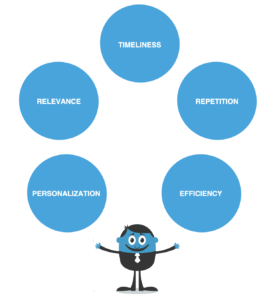
1. Personalization
Sending out mass email blasts has its place, but nothing gets greater ROI or deeper engagement than personalized emails. The same is true with direct mail, which is why nonprofits attempt to include things like past giving amounts in their fundraising letters.
Fundraising automation elevates your ability to personalize your donor outreach in ways that were impossible using the old approaches.
2. Relevance
Imagine sending out a letter about planned giving that offers helpful tips on communicating with family members about an estate plan, such as how to discuss money left to heirs.
That’s great, except how will people who get that letter feel if they have no kids?
The more you know the person you’re marketing to, the more relevant your communications will be.
3. Timeliness
Receiving a thank-you email or card two months after donating isn’t very friendly. Marketing automation enables you to decide when and how often you will communicate with the people on your list. It allows for quick and timely follow-up. Or it allows for automated cultivation that resonates with a donor’s consideration stage and interest in giving at a particular time.
4. Repetition
Good marketing, especially for highly considered decisions related to making major or legacy gifts, should involve repetition so you stay on their minds and they don’t forget about you.
Repetition is the only way to rise above the clutter and remain part of your supporters’ lives—as long as your communications provide value to the recipients (and aren’t always overly solicitous). Fundraising automation makes repetition easy to administer.
5. Efficiency
What’s the most inefficient form of fundraising? Going door to door. It’s exhausting and expensive, even when it works. Telemarketing, direct mail and event fundraising have become increasingly inefficient too.
Efficient marketing looks for ways to persist in effectively engaging with supporters without wearing out the fundraiser or their budget… and fundraising automation protects both.
Donor cultivation and stewardship depends on performing as many of these tasks ‘5 keys to effective marketing’ as possible. Fundraising automation is how you get them done properly and at low cost.
Most organizations start with basic automation
Without automation, performing these tasks can be very time-consuming and tedious. It’s hard to keep up.
Basic automation can help. It can perform the most time-consuming including:
Set-it-and-forget-it campaigns
If you create an email campaign, you can schedule it to blast automatically. Then you won’t have to think about it again. It’s done.
Autoresponders
When someone donates, joins your email list, signs up to volunteer, or performs any number of tasks on your website, you can have a pre-written email that automatically goes out in response. That email speaks directly to the action the person just took.
Thank-you Emails
This is a specialized form of autoresponder that stands alone because of the great value it represents. A GuideStar study found that thanking first-time donors within two days of their gift leads to a fourfold increase in their chances of giving again. That’s right: thanking makes people 400% more likely to give again.
With automated thank-you emails, you will never miss sending a prompt and timely thank-you again.
Giving Receipts
Giving receipts are about more than just tax records. They speak to your credibility and trustworthiness. Did they actually get my donation? Are they aware that I exist? Or did my money just fall into a black hole?
If you’ve ever donated and heard nothing in response, you know how that feels. It’s not good. Automating your giving receipts is ‘square one’ when it comes to fundraising automation.
But is ‘basic’ the best use of automation technology?
Not really.
All of those basic automation tasks have great value. All of them fulfill the marketing tasks listed earlier. But all of them solve problems mostly related to managing low-dollar donor communications. That means you’re putting your automated systems to work mostly to communicate with the people who supply about 7% of your individual donor revenue.
To be clear—it’s still worth doing. You’ll save time and be more efficient. You’ll engage lots of donors better and more frequently. And you’ll make them feel appreciated.
All of that is good and worth pursuing for all of your donors. But consider again what we discussed in the previous post: The average major donor gives over $75,000 to a single nonprofit over their lifetime, compared to just $45 from the average low-dollar donor.
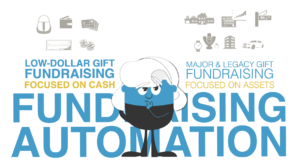
If you could use fundraising automation to solve some of your greatest time-sucking challenges related to raising major gifts—including legacy gifts—and helping mid-level donors move themselves up, wouldn’t you want to do it?
Let’s explore how you can do just that.
Going beyond basic marketing automation
Basic automation is a no-brainer.
It works well for routine tasks and it’s fairly easy to implement—especially because it doesn’t require very much strategic thinking. However, more sophisticated challenges (like raising major gifts and migrating mid-level donors) require more refined game plans.
Imagine this: What if you were to promote a supporter survey on your website or social media? And, what about offering a video, special report or eBook telling the story of one of your beneficiaries? What would happen after your supporters explore any of those offers?
Nothing?
Or would you have a strategic follow-up plan in place? And would that follow-up plan be effective? How would you know?
Imagine if you could measure its effectiveness with metrics like email opens and clicks as well as meetings set and gifts closed.
More personalized and relevant follow-up sequences
Armed with information your donors provide in surveys, questionnaires or forms your supporters need to fill out in order to read downloadable materials, you’d be able to properly follow-up with new leads and potential donors. But you wouldn’t be able to do it at scale. Not without automation.
Fundraising automation allows you to create personalized and relevant follow-up cultivation sequences (not one-offs) based on why your supporters care, what they’d like to support, how they’d like to support it (with cash or assets) and, most importantly, where they are in the consideration process for giving. After all, timing really is everything.
Look, getting a fish to bite is great. But you have to pull it all the way in before it does you any good. That’s why your automated efforts need to be well thought out and sequential. Otherwise, they’ll just seem transactional, robotic and unsentimental.
Absent inspirational follow-up, you’ll be less likely to land the meetings you need to qualify donors and properly populate your caseloads — leading to more meaningful relationships and more consequential support.
Populating portfolios and generating major gifts
How do you attract new major donors or turn low- and mid-level donors into major donors? And how do you make sure your current major donors come back, plan a legacy gift, and refer their friends?
Let’s be frank. It ain’t easy.
If you don’t automate some parts of the job, you spend a ton of time and money identifying and qualifying potential mid-level and major donors from vast lists of prospects and donors, often supplied to you by wealth-screening companies or prospect researchers.
That’s hard work.
It takes time and costs money.
Then you have to develop a plan to reach out to those folks. This might include phone, email, in-person meetings, and all the rest.
That’s hard, too. In fact, these days, it’s harder than ever to get someone to answer their phone or respond to your email outreach.
If you do reach them via a traditional approach (without automation) and they are interested, you still need to conduct donor discovery one-on-one. That’s especially challenging because it’s time consuming and donors won’t always tell you what you need to know.
And why would they? You’ve got to earn their trust over time in order to get that kind of information. So you need to be patient. But your boss and board are breathing down your neck. Your cause needs money now.
That’s why you should consider fundraising automation. It can leverage technology to effortlessly enhance this entire process in profound ways, some of which we’ll discuss later in future blog posts.
And in case you’ve been wondering… yes!… by leveraging technology for automation you CAN perform donor discovery and cultivation tasks more easily and at scale. This work takes a lot of time and effort.
Remember, your staff time is your organization’s money. Plus, that money used to belong to your donors. They want you to make good use of it.
Leveraging technology for automation does just that. It makes the best use of your donors’ funds to optimize your staff and raise more money at the same time.
But can you afford it?
Go to my next post and we’ll explore whether or not you can afford to automate your fundraising operations.
SPOILER ALERT: You can’t afford not to. 🙂
Related Posts:
>> Can your nonprofit organization afford to invest in marketing automation?
>> Do you really need MORE gift officers to raise more money?
>> Top 10 ways marketing automation helps nonprofits raise more money for less
>> How to put marketing automation to work for your nonprofit’s fundraising

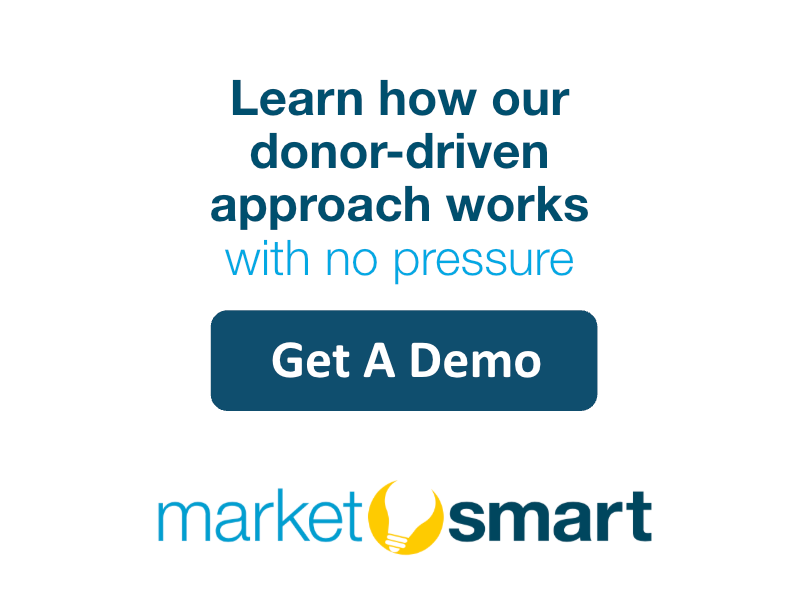
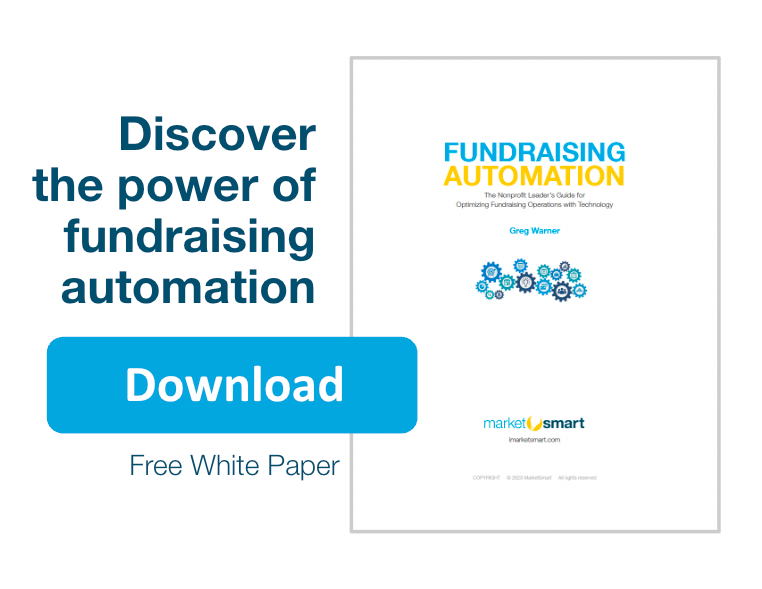
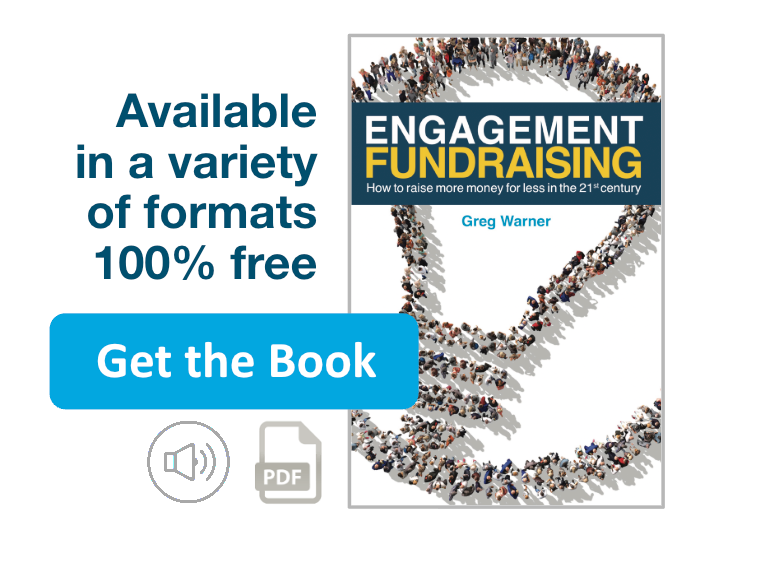
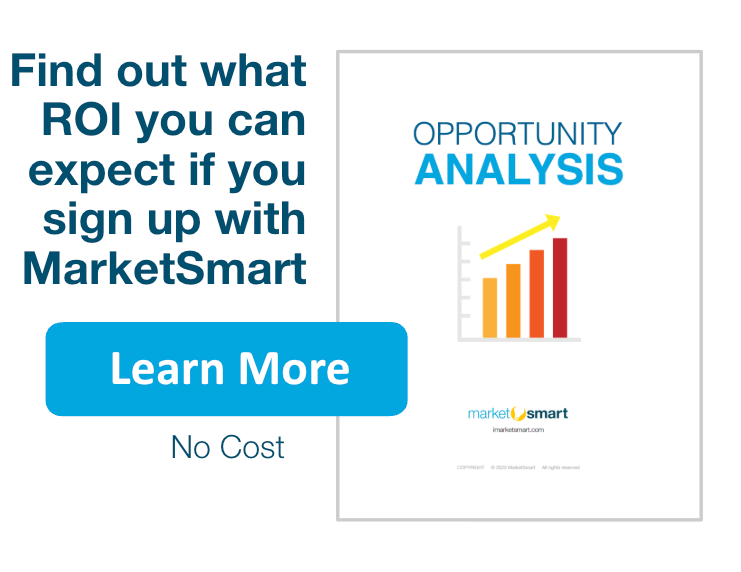
Wonderful idea for fundraising